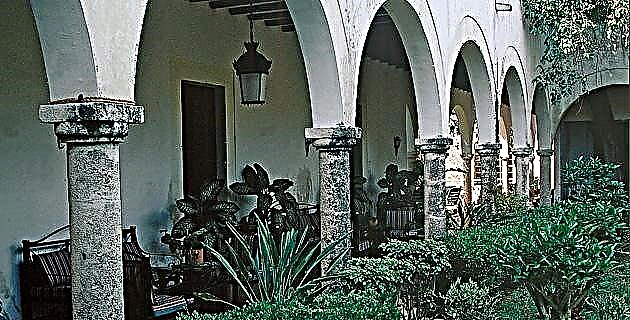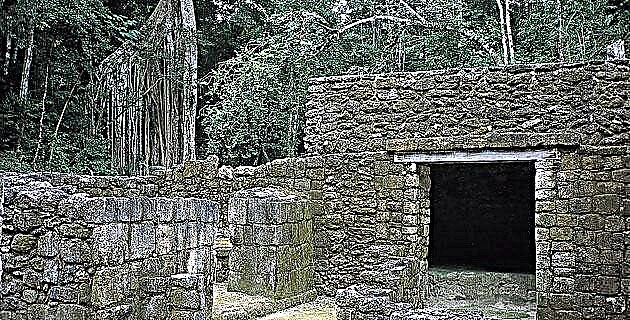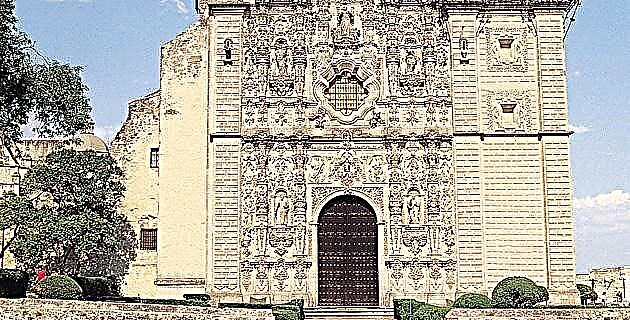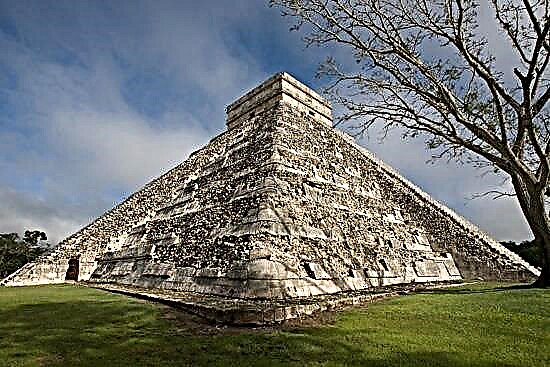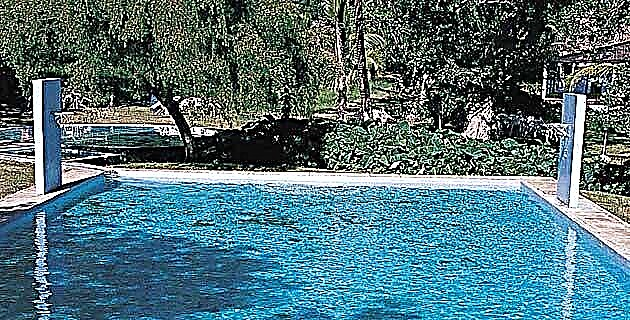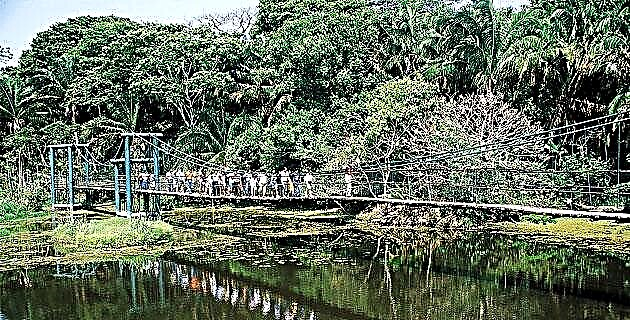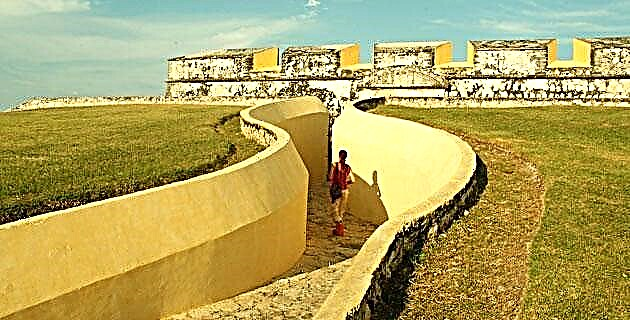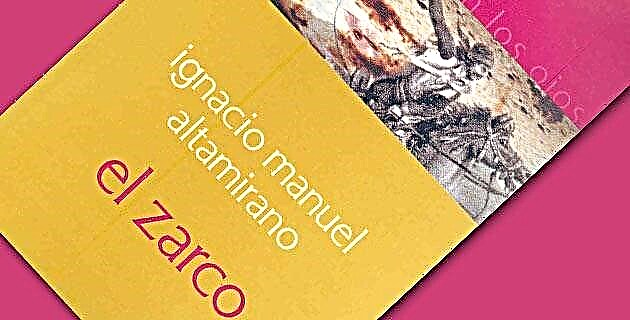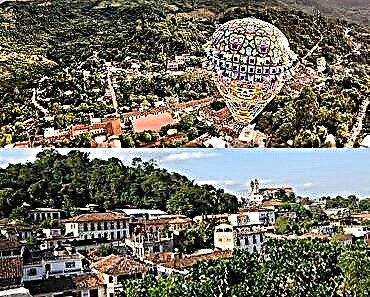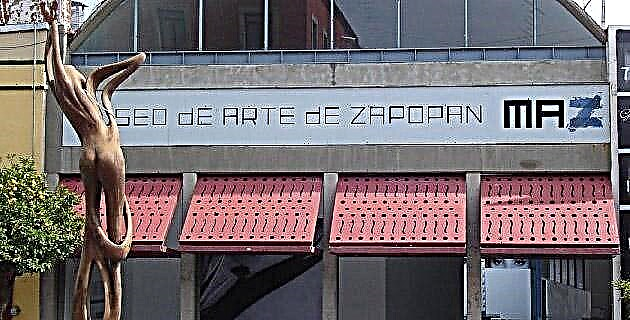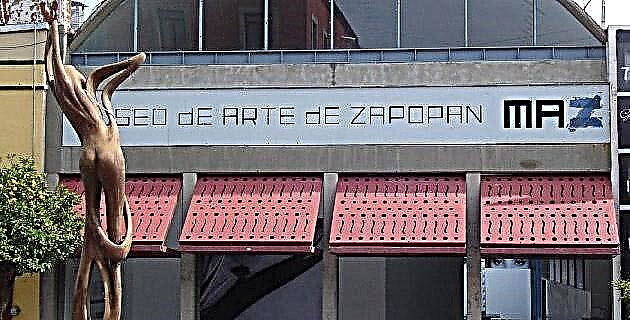
As we continue along this walk we arrive at the Zapopan Art Museum, framed by modernist architecture and where various exhibitions are exhibited.
From afar, this Mexican neocolonial style building, built with gray quarry, is harmonious and very pleasing to the eye; It dates from 1942, when it operated as a school, and it was until 1968 when it became the seat of municipal power.
With two floors, the interior patio is delineated by a traditional corridor delimited by semicircular arches; there is a quarry fountain in the center and immediately a staircase in which stands out a mural by Guillermo Chávez painted in 1970 and entitled World Revolutions. In front of this harmonious building is the Church of San Pedro Apóstol, neoclassical and original in 1819, whose entrance is framed by a semicircular arch, while the images of San Pedro, San Pablo and the Virgin stand out in its cover page.
Continuing along the Paseo Teopitzintli, you reach the Plaza de las Américas, an extensive esplanade with a quarry kiosk crowned by an eagle with outstretched wings. 16 columns support the vault, which in its upper part supports a smaller-scale replica of the same kiosk; Two fountains also stand out in this panorama, each one with a bronze sculpture representing the gods of corn.
To finish off this landscape in a spectacular way, the Basilica of the Virgin of Zapopan rises up, a sanctuary that after various stages of reconstruction that began in the 17th century, was blessed in 1730 by Bishop Nicolás Carlos Gómez. The façade has a Plateresque style, and as one of the most important religious centers in the West and in Mexico, it houses inside the venerated image of the Virgin of Zapopan, made of corn cane, and who has been the protagonist of important events that they form the history of the place. Year after year, on October 12, nearly two million pilgrims from all over the country and even abroad come to this esplanade to keep alive the traditional pilgrimage that has been held since 1734.
On one side of the Basilica, on the left side and with an arched façade towards the atrium, is the Franciscan Convent, which the religious of the Guadalupe Zacatecas Convent founded in 1816. Upon entering, on the walls of the corridors that lead Inside, a series of photographs of the most prominent friars who inhabited this enclosure was placed - in the manner of a historical exhibition. Here is also kept an invaluable set of artistic works of great importance, especially paintings, dating from the 18th and 19th centuries, made in Guadalajara and surrounding towns, a collection rescued from the destruction that threatened it during the various social conflicts of those centuries and it was jealously guarded in the convent. Notable in this collection are works by painters Francisco de León, Diego de Accounts and Teódulo Arellano.
On the opposite side of the convent is the Wixarica Museo del Arte Huichol. Since the missionary activity carried out by the Franciscans among the Huichols was resumed in 1953, this exhibition was inaugurated in 1963 to generate some resources to help maintain the work. Here you can see the traditional clothing, such as shirts, tubarras, cross-stitch embroidered backpacks, as well as accessories and crafts made with beads.
In front of this Huichol exhibition is the Museum of the Virgin of Zapopan, a small space that exhibits a series of objects that honor the image, such as silver and gold offerings, niches, elaborate clothes and accessories for their trousseau, as well as a series of objects of worship. Here we can also witness the devotion that is given to the image, from an infinity of small paintings with fervent legends full of thanks that the faithful themselves have created to venerate it.
Towards bohemia

